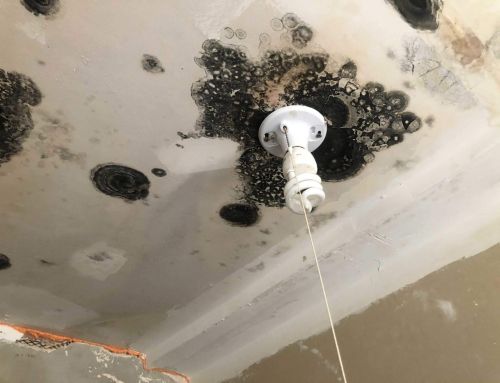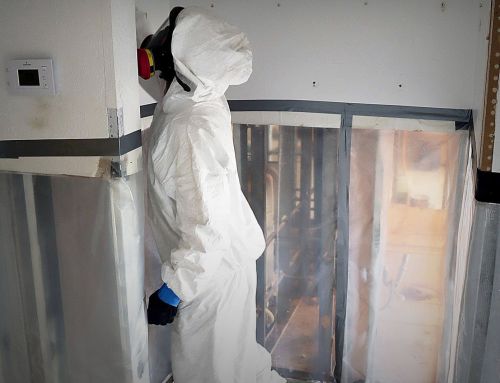Even in open, fresh air environments, mold spores exist. People and mold have shared the planet for thousands of years, and often without consequence. A natural and inescapable part of our reality, mold plays a vital role in breaking down dead organic matter and returning essential nutrients to the soil. According to the National Center for Healthy Housing, without it, humans wouldn’t eat. However, when mold infests your home, it has a far more sinister effect. Pervasive and fast-spreading, indoor mold instantly compromises both air quality and human health. Fortunately, there are many resources and treatment options available.
Common Treatments That Frequently Fail
Some popular mold treatment options don’t work that well. As per the United States Environmental Protection Agency (EPA), treating mold with bleach is ineffective and dangerous. Although bleach and other chlorine-containing solutions can effectively whiten mold and deodorize affected surfaces, the results of a bleach-based mold treatment are always substandard and short term.
Bleach lacks the ability to deeply penetrate porous surfaces that have been infested by mold. When mold forms on unsealed wood, drywall, tile grout, or other surfaces with tiny, permeable openings, it extends its roots in all directions. Also known as mycelium and hyphae, these roots become vast, unseen networks in areas that homeowners simply cannot treat. This is why moldy windowsills and tile grout that have been bleached will only maintain their pristine appearance for just several days or weeks. The EPA is an excellent resource for homeowners who want to learn more about indoor mold and the short- and long-term effects of common surface treatments. White vinegar, rubbing alcohol, and grain alcohol are several common applications that routinely fall short of getting the job done.
Mold’s Impact on Human Health
Many people live with mold and in generally moldy conditions for quite some time, without ever being aware of just how much their health is being impacted. Long-term mold exposure can result in a number of surprising symptoms, including:
- Unexplained weight loss or weight gain
- A persistent metallic taste on the tongue
- Chronic depression
- Tingling or numbness in the extremities
- Fibromyalgia-like pain, especially in the abdominal region
These and other surprising symptoms come in conjunction with itchy, watery eyes, coughing, sneezing, sinus irritation, and other air quality-related ailments. Chiropractors, naturopathic doctors, functional medicine experts, and other medical health professionals can share comprehensive lists of both the expected and unexpected symptoms of mold exposure. The Centers for Disease Control (CDC) is another great resource for information on mold exposure and mold toxicity.
Resources for Improving Your Health After Mold Exposure
If the mold in your home is wreaking havoc on your health, there are several evidence-based treatments to consider. These include IV infusions for mold toxicity, nasal corticosteroids, antihistamines, and both oral and nasal decongestants. The National Institutes for Health outlines several treatment protocols for the management of mold infections. However, before deciding upon any course of action, it’s always important to first eliminate the source of mold exposure. After all, you cannot effectively rid yourself of unpleasant symptoms in a long-term fashion until you’ve improved your indoor air quality and the overall health of your living environment.
Plumbers, HVAC Companies, and Indoor Air Quality Experts
Although mold flourishes outdoors, it really shouldn’t gain a foothold inside of your home. Proliferations of mold in your living environment are an indication of an underlying problem. In most cases, they mean that there’s simply too much moisture in the indoor air. This excess moisture can be attributed to plumbing leaks, insufficient humidity regulation from your HVAC system, or major events like floods, fires, and wastewater backups.
Even if you don’t have a visible leak in your home, it’s important to hire a plumber to perform a whole-house plumbing inspection. Slow and hidden leaks are frequent cause of mold infestation. These are leaks that occur at the backs of appliances, in crawlspaces, at the foundation level of homes, and behind drywall. Professional plumbers can identify the telltale signs of hidden leaks and pinpoint their exact locations. They can also tighten loose connections, replace worn components, or implement foundation and pipe repair plans. Eliminating the moisture that’s allowing mold to flourish will create a cleaner, fresher-smelling, and ultimately healthier living environment. It will also make it infinitely easier to successfully leverage treatments for mold toxicity and long-term mold remediation.
If the culprit is your HVAC system, it may be time to swap out your old air conditioner for a more modern and higher-performing unit. Some households simply generate far more moisture than others. For instance, if you have a large family and live in crowded conditions, your HVAC system may struggle to eliminate all of the humidity that’s created by residents’ hot baths and showers, cooking projects, and other indoor activities. In cases like these, the installation of whole-house dehumidification equipment will both simplify and support the mold treatment process and play a hand in preventing mold from recurring. HVAC companies that offer advanced IAQ solutions may be able to recommend a variety of integrated HVAC accessories for promoting and supporting resident health.
Indoor air quality experts and mold remediation experts leverage mold treatment techniques that far outperform any measures homeowners can leverage on their own. They use treatments that eliminate both surface mold and the vast networks of mycelium and hyphae that have grown throughout porous materials. This includes all mold and mold roots in furnishings, carpeting, carpet padding, drapes, unsealed wood, tile grout, and more.
The Power of Ultraviolet Sanitization
We use ultraviolet sanitization as part of our proprietary mold treatment to ensure ultra-rapid and long-lasting results. Ultraviolet sanitization eliminates all mold throughout the living environment, including the mold roots that are hiding in impossible-to-reach spaces. These treatments are especially beneficial in instances in which mold spores have entered and infested HVAC equipment. When HVAC systems are infested with mold, new mold spores are circulated throughout the entire building every time the heater or air conditioner is turned on. Our treatment method makes it possible to preserve these essential building features even as you protect your health. Not only are they effective, but they’re also cost-effective. When you work with us, there’s no need to toss out your favorite furnishings, artwork, clothing, or flooring.
Preventative Measures to Keep Mold Problems From Recurring
Of all the mold resources that you have access to, those that are prevention-oriented are the most important. Plumbers play a critical role in mold prevention. Given the ongoing risk of slow and hidden leaks that add excess moisture to buildings, it’s best to schedule whole-house plumbing inspections annually.
Annual furnace and air conditioner tune-ups will keep your HVAC equipment in top condition and better able to regulate indoor temperatures and humidity. When floods occur or after hidden leaks are discovered, you can always count on us to restore normalcy to your living environment and create a comfortable, safe space that promotes and supports the health of all building residents.
We’re committed to making mold remediation easy. We offer mold testing, mold remediation, and mold restoration services. We also provide odor removal and ultraviolet sanitization. To find out more or to schedule service, contact Pur360 today!



